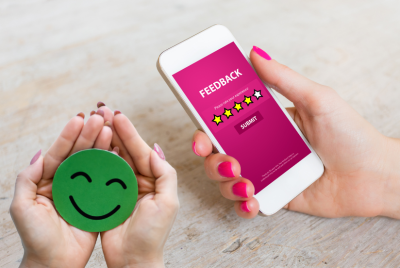Email Marketing Automation: Best Practices for Coaches and Course Creators
As a coach or course creator, email marketing automation can be a game-changer for your business. It allows you to nurture relationships with your prospects and customers, deliver targeted content, and ultimately drive more conversions. In this article, I will share with you the best practices for implementing email marketing automation that can help you optimize your efforts and achieve your business goals.
Introduction
Email marketing automation is the process of using software and technology to automate various aspects of your email marketing campaigns. It enables you to send timely and relevant emails to your subscribers based on their behavior, preferences, and engagement with your content. For coaches and course creators, email marketing automation can significantly streamline your communication efforts, save you time, and enhance the overall effectiveness of your marketing strategy.
Benefits of Email Marketing Automation for Coaches and Course Creators
Time-saving and efficiency: By automating repetitive tasks such as sending welcome emails, course reminders, and follow-up messages, you can focus on other important aspects of your business, such as creating valuable content and engaging with your audience.
- Personalized communication with prospects and customers: Email marketing automation allows you to deliver personalized messages to your subscribers based on their interests, previous interactions, and stage in the customer journey. This personalized approach helps build stronger connections and increases the chances of conversion.
- Increased engagement and conversion rates: Automated emails can be triggered by specific actions or events, such as signing up for a webinar or completing a course module. These targeted emails have higher open and click-through rates, leading to increased engagement and conversions.
- Targeted messaging and segmentation: With email marketing automation, you can segment your audience based on various criteria, such as demographics, interests, or purchase history. This segmentation enables you to tailor your messages to specific groups, delivering more relevant content and offers.
- Scalability and growth: As your coaching or course business grows, managing individual email communications becomes more challenging. Email marketing automation scales with your business, allowing you to maintain consistent and effective communication as your subscriber list expands.
Now that we understand the benefits, let’s dive into the best practices for email marketing automation that can help you maximize your results.
Best Practices for Email Marketing Automation
1. Define clear goals and objectives
Before implementing any email marketing automation strategy, it’s essential to define clear goals and objectives. What do you want to achieve with your email campaigns? Whether it’s increasing course sign-ups, driving sales of coaching packages, or nurturing leads, having specific goals will guide your automation efforts and ensure you stay focused on what matters most to your business.
Aligning your goals with your overall business objectives is crucial for maintaining consistency and coherence in your email marketing strategy. Each email campaign should serve a specific purpose that contributes to your larger goals, whether it’s educating your audience, promoting your courses, or providing valuable resources.
2. Build a quality email list
Having a quality email list is fundamental to the success of your email marketing automation efforts. You want to ensure that your subscribers are genuinely interested in your content and have given their consent to receive emails from you. Purchasing email lists or using unethical tactics to acquire subscribers may result in low engagement rates and damage your sender reputation.
Focus on growing your email list organically by implementing strategies such as offering valuable lead magnets, optimizing your website for email sign-ups, and leveraging social media channels. By attracting the right audience to your list, you’ll have a higher chance of converting them into paying customers.
3. Segment your audience
One of the key advantages of email marketing automation is the ability to segment your audience based on various criteria. Segmenting allows you to send targeted emails that resonate with different groups of subscribers. For example, you can segment based on their interests, level of engagement, or stage in the customer journey.
By understanding the unique needs and preferences of each segment, you can tailor your messaging and offers to maximize relevance and effectiveness. A personalized approach creates a sense of connection and builds trust with your audience, increasing the likelihood of conversion.
4. Create valuable and engaging content
When it comes to email marketing, content is king. Your subscribers are more likely to engage with your emails if you provide them with valuable content that meets their needs and interests. Whether it’s sharing educational resources, offering exclusive insights, or providing actionable tips, focus on delivering content that adds value to your subscribers’ lives.
Make your emails engaging by using compelling storytelling, incorporating visuals, and adding interactive elements. Keep your writing style conversational, friendly, and relatable. Remember, you are not just selling products or services; you are building relationships with your audience.
5. Personalize your emails
Personalization is a powerful strategy to make your emails more effective and impactful. Use your email marketing automation platform to leverage personalization techniques such as dynamic content, merge tags, and personalized subject lines. Address your subscribers by their first names and consider including personalized recommendations based on their previous interactions.
By making your emails feel personalized and relevant to each recipient, you can significantly improve open rates, click-through rates, and overall engagement. Personalization shows your subscribers that you understand their needs and are committed to providing them with tailored solutions.
6. Set up effective email funnels
Email funnels are a series of automated emails that guide subscribers through the customer journey. Each email in the funnel is strategically designed to deliver the right message at the right time, nurturing leads and driving conversions.
Map out your customer journey and identify key touchpoints where automated emails can be triggered. For example, a welcome email series can be sent to new subscribers, providing them with valuable information and setting expectations. Follow-up emails can be sent after a course purchase, offering additional resources or upsell opportunities.
Automating your email funnels ensures that your subscribers receive relevant content and offers without requiring manual intervention from your side. This saves you time and allows you to focus on other aspects of your business while nurturing your leads and customers effectively.
7. Test and optimize your campaigns
To continuously improve your email marketing automation efforts, it’s essential to test different elements of your campaigns. Test variations of subject lines, email content, CTAs, and even the timing of your emails. Split testing allows you to compare the performance of different versions and identify what works best for your audience.
Analyzing data is crucial for making data-driven decisions and optimizing your campaigns. Pay attention to metrics such as open rates, click-through rates, conversion rates, and unsubscribe rates. Use this data to refine your email content, targeting, and automation workflows to achieve better results over time.
8. Monitor and measure your results
Regularly monitor and measure the results of your email marketing automation campaigns. Use analytics tools provided by your email marketing platform to gain insights into the performance of your emails. Monitor key metrics and track progress towards your defined goals.
Analyze the data to identify trends, patterns, and areas for improvement. Are certain segments of your audience responding better to specific emails? Which emails are generating the highest conversions? Use these insights to make informed decisions and optimize your automation strategy for better outcomes.
Conclusion
Email marketing automation is a powerful tool for coaches and course creators to streamline their communication efforts, engage with their audience, and drive conversions. By following the best practices outlined in this article, you can create effective email marketing automation campaigns that deliver results.
Remember to define clear goals, build a quality email list, segment your audience, create valuable content, personalize your emails, set up effective email funnels, test and optimize your campaigns, and monitor your results. With a strategic and well-executed email marketing automation strategy, you can nurture relationships, establish your authority, and grow your coaching or course business.
FAQs
1. How often should I send emails to my subscribers?
The frequency of your email sends depends on various factors, including your audience’s preferences and the nature of your business. However, it’s generally recommended to maintain a consistent schedule, whether it’s weekly, bi-weekly, or monthly. Test different frequencies and monitor engagement metrics to find the sweet spot for your audience.
2. Can I use email marketing automation for lead nurturing?
Absolutely! Email marketing automation is an excellent tool for lead nurturing. By setting up automated email sequences tailored to different stages of the customer journey, you can educate, engage, and convert your leads into paying customers.
3. What are some popular email marketing automation platforms?
Some popular email marketing automation platforms include Keap, Mailchimp, ConvertKit, ActiveCampaign, and Drip. These platforms offer a wide range of features and integrations to help you automate your email marketing efforts effectively.
4. How can I avoid my emails going to the spam folder?
To avoid your emails being marked as spam, ensure that you comply with email deliverability best practices. These include using a reputable email service provider, authenticating your emails with SPF and DKIM, avoiding spam trigger words in your subject lines and content, and regularly cleaning your email list to remove inactive or invalid addresses.
5. Is it necessary to have technical skills to set up email marketing automation?
While some technical knowledge can be helpful, many email marketing automation platforms are user-friendly and provide intuitive interfaces that make it easy to set up automated campaigns. Most platforms also offer resources and tutorials to guide you through the process, so you don’t necessarily need advanced technical skills to get started.




